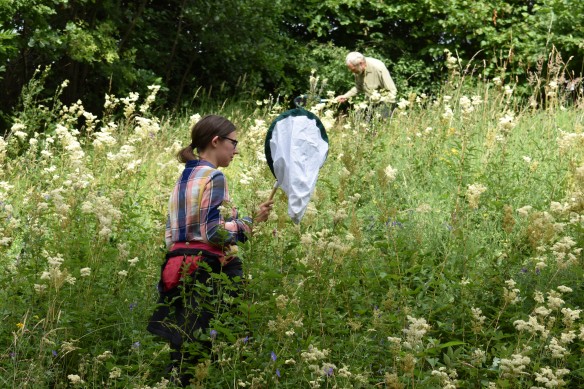No, not the Julie Andrews song from ‘The King and I’ but a Buglife course to get to know your pollinators. Buglife run a series of identification courses throughout the summer, many are free and all are excellent. My recent trip to their Pollinator Workshop in Grangemouth was typically informative, uplifting and fun.

Suzanne Burgess, who manages Buglife’s Scotland branch, was on great form as she presented an insight on the diversity of pollinators, their lifecycles, roles and key characteristics in the morning before taking us out in the afternoon to catch and identify pollinators. The course was held at the Scottish Wildlife Trust’s Jupiter Urban Wildlife Centre in Grangemouth and was a real hit with everyone who attended.
Founded in 2002, Buglife is devoted to conservation of invertebrates and their aim is to halt invertebrate extinctions and achieve sustainable populations of invertebrates. They do this through a mixture of projects and campaigns which put habitats and species at the centre of their work, but increasingly they have earned a reputation as an organisation that very successfully connects people and nature.

The identification course that I attended in Grangemouth was a real treat. This workshop quickly revealed the amazing diversity of Scottish pollinators (including bees, hoverflies, butterflies and others), their lifecycle, several commonly seen species and outlined the best surveying techniques.
A fascinating section the value of grasslands, swiftly moved to what we can all do to help pollinators in the outdoor space we look after or connect with. Then butterflies, bees and wasps fell under the microscope.

The world of cuckoo bumblebees took us on to flies, and in particular hoverflies. False veins, false margins, and then butterflies. How to distinguish the relatively small number we get in Scotland was drawn to a close about what butterflies do in winter. Then it was moths and beetles before nets and pots were handed out.
To say the weather was kind is faint praise for what was a lovely afternoon. After Suzanne had shown us her sweeping style we were let loose on the meadow to see what we could catch … and boy did we catch a lot. Solitary bees, red-tailed bumblebees, tree bumblebees, common wasps, honey bees, an amazing range of hoverflies all offered themselves up and were duly identified, recorded and released. The list of species we netted was as diverse as it was long.

It was hard to emerge from the course feeling anything but enthused. Here was a wonderful way to connect with nature and proof of the old Scots saying that “Every day is a School Day”.

Follow the Buglife website for details of more courses and in the meantime one of the best ways to help our pollinators is to consider joining bodies like Buglife, Bumblebee Conservation Trust and Butterfly Conservation. They do great work and deserve your help.
Find out more
Buglife Scotland @ https://www.buglife.org.uk/buglife-scotland
Pollinator Strategy for Scotland @ https://www.nature.scot/pollinator-strategy-2017-2027









